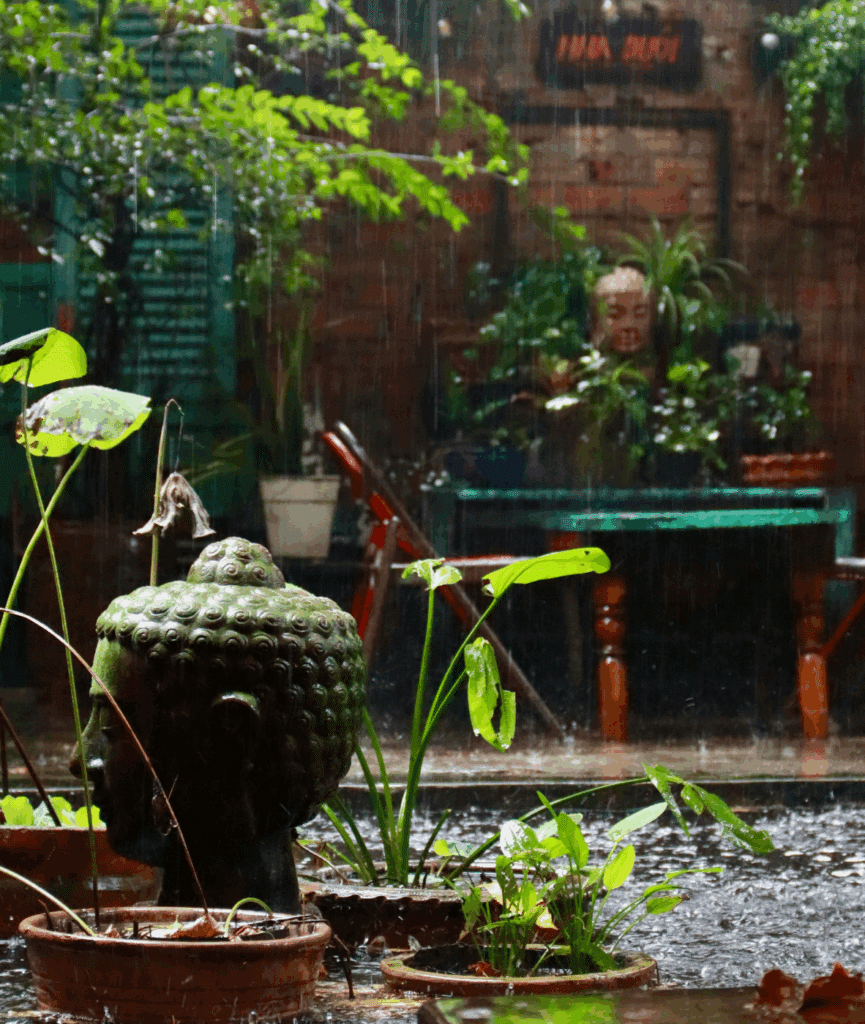Horticultural Therapy for Trauma Recovery in Adults

Evidence suggests that almost everyone who goes through trauma eventually experiences some level of post-traumatic stress, including intrusive memories, avoidance behaviors, and hyperarousal. This reaction is believed to be common after a highly distressing event or period, but typically dissolves with time – in most cases. However, for some survivors, such symptoms might persist or worsen, leading to post-traumatic stress disorder (PTSD).1
Regardless of whether trauma is tied to a single event or long-term exposure to stress or discomfort, it can affect the mind and the body significantly. This impact is reflected in a variety of PTSD symptoms, which can be difficult to cope with, despite the help of traditional therapy approaches.
Because PTSD has such a strong physiological effect, talk therapy sometimes isn’t enough for recovery. Yet this may be where complementary practices, such as trauma-informed horticultural therapy, may enter the picture. This evidence-based therapy uses gardening for emotional healing, tapping into elements of the body and mind that traditional therapy sometimes can’t access.
If you or someone you care about is struggling with trauma and is willing to explore approaches beyond classical therapy, then nature therapy for PTSD recovery may be an option. This page covers everything you need to know about emotional healing with gardening, including:
How trauma effects linger over time- What trauma-informed horticultural therapy does
- How gardening helps trauma survivors
- Who can benefit from trauma-based gardening therapy
- How to practice gardening for emotional healing on your own
- When and where to seek trauma-based gardening therapy

Long-Term Effects of Trauma: Common PTSD Symptoms
Sometimes subtle, and other times loud and disruptive, PTSD typically manifests in four types of symptoms:2
Intrusive thoughts and memories: Unwanted memories, nightmares, or flashbacks that can make people feel “stuck” in or as though they’re reliving the traumatic event- Avoidance: Deliberately trying to stay away from people, places, or thoughts related to the traumatic event
- Negative effects on mood and perspective: Feelings of guilt, detachment, low self-worth, or a sense that the world is unsafe
- Heightened arousal: Being easily startled, irritable, constantly feeling on edge, or having trouble sleeping and concentrating
Additionally, throughout the years, research has further elaborated on the different emotional and physical effects of trauma on survivors. For example, psychologically, trauma is known to result in intense feelings of shame and relational distrust.3,4 Physiologically, the consequences of trauma can be found in memory and attention impairment, as well as in digestive and immune system issues.5,6
Given the overarching long-term effects of trauma on survivors, understanding the wide variety of available treatment options allows people to find the right fit for their needs.
What Is Horticultural Therapy for Trauma Recovery?
As this approach is considered a form of therapy, this means that it involves the guidance of a professional who is properly trained in the method. Additionally, it follows a specific structure, defined and regulated by the therapist in charge.
Horticultural therapy is especially powerful in trauma-informed settings, focused on creating safety, choice, and trust. Clients participate in gardening for emotional grounding – planting, watering, pruning, or harvesting – in ways that suit their energy levels, physical condition, and emotional state. These processes promote multiple forms of non-verbal healing, such as mindfulness, reconnection, relaxation, routine, and even spirituality.
How Gardening Helps Trauma Survivors
While such effects might also be helpful for people with other mental health issues, grounding techniques in horticulture can be especially meaningful for trauma survivors.
The following are several key aspects of how horticultural therapy helps with trauma:
-
Emotional grounding, mindfulness, and presence: Gardening engages the senses through touch, smell, and visual cues – all of which can regulate the nervous system and promote presence.8- Stress reduction: Interacting with plants can significantly improve the body’s reaction to stress. By suppressing the sympathetic nervous system (which gets activated during flight-or-fight), gardening can balance nervous system dysregulations that are common among trauma survivors.9
- Self-esteem and empowerment: Survivors can experience a lingering sense of helplessness, shame, and disempowerment.3 Actively participating in the growth of plants can contribute to feelings of agency, connectedness, and confidence.8
- Comfort and predictability: Caring for plants involves a variety of rhythmic, predictable, and repetitive tasks. These can cultivate a sense of calm and structure – promoting an overall sense of safety and routine.10
- Care and meaning: People coping with trauma might struggle with a negative perception of themselves or the world as a result of their experience. The act of engaging with and supporting nature can be deeply emotional and restorative. In other words, the act of witnessing and caring for nature can be spiritually and symbolically filled with meaning.8
Nature as a Healing Tool for Trauma
Research supports the significant benefits of therapeutic gardening for trauma survivors. This shouldn’t come as a surprise, given that nature in general has long been known to have a profound healing and balancing effect.
For instance, spending time in nature has often been listed as a key promoter of both physical and psychological health, as it has a deeply calming and overall balancing effect. This might explain why we, as humans, are naturally drawn to the outdoors – a concept also referred to as “biophilia.”
Nature therapy interventions for trauma include more than active gardening. For example, grounding techniques in horticulture include spending time in green spaces, walking barefoot (on sand, grass, or soil), and engaging in mindfulness activities outdoors. In this way, nature therapy for PTSD recovery can provide gentle stimulation that helps regulate the nervous system and rebuild a sense of safety.
Who Can Benefit From Horticultural Therapy?
Horticultural therapy can be adapted to each person’s needs, capabilities, and experiences. While it has a number of health benefits for the general population, it is particularly useful for:
- Adults with complex trauma or PTSD
- Adolescents struggling with emotional regulation or anxiety
- Individuals looking for alternatives to talk therapy
- People under chronic stress
- Those showing dissociative tendencies
Not only can people with different needs benefit from horticultural therapy for trauma recovery, but there are multiple ways of implementing it in your life, including self-guided practices.
Self-Guided PTSD Recovery Through Gardening
The following are some tips for practicing self-guided PTSD recovery through gardening:
Start small and consider the space you have at your disposal. If you have no outdoor space, you can stick to indoor gardening, such as planting herbs on windowsills- Pick plants that are suitable for your space and its conditions. Think of things like the light and soil type of your space
- Begin with easier tasks to avoid overwhelm. Remember that everything new can be challenging at first – give it time
- Be mindful of your gardening experience, for instance, focus on sensations, smells, and visual cues. Pay attention to what you are doing, and try to remain present in the moment. Breathwork could also help you focus your attention
- Reflect on your journey of emotional healing with gardening. For example, you could accompany gardening with a journaling practice
Trying these steps for gardening for emotional grounding can give you an idea of what horticultural therapy would look like and whether it’s a good fit for you.
When to Seek Professional Guidance on Horticultural Therapy for Trauma
While self-guided gardening can be helpful for healing, working with a trauma-informed professional is essential for sustainable, long-term improvement – especially when trauma symptoms are severe or impair daily functioning.
There are different reasons why trauma survivors could benefit from professional support. First, gardening practices might invite intense emotions to come up. When that happens, the presence of a therapist can provide a sense of safety and stability.
Additionally, horticultural therapy can be incorporated in a trauma healing plan alongside cognitive behavioral therapy (CBT) or other trauma-informed approaches. In these structured techniques, a therapist can guide, balance, and structure the different phases of recovery to avoid overwhelm and retraumatization.
Therapists can also offer insight into potential adaptations of common gardening practices for people with physical limitations or cognitive impairments.
Mission Connection: Professional Nature Therapy for PTSD Recovery
For many trauma survivors, the journey of healing from trauma is often not limited to talking and reflection. Many seek additional support in holistic approaches that include physical practices, such as gardening. Interacting with and taking care of nature is a grounded way to reconnect with yourself and the world, and can be deeply restorative for trauma survivors.
At Mission Connection, we care about offering you and your loved ones the best possible treatment and support for a variety of mental health concerns, including PTSD and trauma recovery.
If you’d like more information on how and where you can start horticultural therapy for trauma recovery, don’t hesitate to reach out to our team. We’re available 24/7 to advise and support you on the most suitable healing paths for your needs.

References
- Kearns, M. C., Ressler, K. J., Zatzick, D., & Rothbaum, B. O. (2012). Early interventions for PTSD: A review. Depression and Anxiety, 29(10), 833–842. https://onlinelibrary.wiley.com/doi/10.1002/da.21997
- American Psychiatric Association. (2022). Diagnostic and statistical manual of mental disorders (5th ed., text rev.; DSM-5-TR). American Psychiatric Publishing.
- La Bash, H., & Papa, A. (2014). Shame and PTSD symptoms. Psychological Trauma: Theory, Research, Practice, and Policy, 6(2), 159–160. https://doi.org/10.1037/a0032637
- Hepp, J., Schmitz, S. E., Urbild, J., Zauner, K., & Niedtfeld, I. (2021). Childhood maltreatment is associated with distrust and negatively biased emotion processing. Borderline Personality Disorder and Emotion Dysregulation, 8(5). https://doi.org/10.1186/s40479-020-00143-5
- Brandes, D., Ben-Schachar, G., Gilboa, A., Bonne, O., Freedman, S., & Shalev, A. Y. (2002). PTSD symptoms and cognitive performance in recent trauma survivors. Psychiatry Research, 110(2), 231–238. https://doi.org/10.1016/S0165-1781(02)00125-7
- Oroian, B. A., Ciobica, A., Timofte, D., Stefanescu, C., & Lăcrămioara Șerban, I. (2021). New metabolic, digestive, and oxidative stress-related manifestations associated with posttraumatic stress disorder. Oxidative Medicine and Cellular Longevity, 2021, Article 8850697. https://doi.org/10.1155/2021/8850697
- American Horticultural Therapy Association. (n.d.). AHTA definitions and positions. https://www.ahta.org/ahta-definitions-and-positions
- Siu, A. M. H., Kam, M., & Mok, I. (2020). Horticultural therapy program for people with mental illness: A mixed-method evaluation. International Journal of Environmental Research and Public Health, 17(3), 711. https://doi.org/10.3390/ijerph17030711
- Lee, M. S., Lee, J., Park, B. J., & Miyazaki, Y. (2015). Interaction with indoor plants may reduce psychological and physiological stress by suppressing autonomic nervous system activity in young adults: A randomized crossover study. Journal of Physiological Anthropology, 34, 21. https://doi.org/10.1186/s40101-015-0060-8
- Jueng, R.-N., & Chen, I.-J. (2022). The effects of horticultural therapy on sense of coherence among residents of long-term care facilities: A quasi experimental design. International Journal of Environmental Research and Public Health, 19(9), 5412. https://www.mdpi.com/1660-4601/19/9/5412






